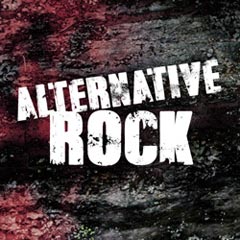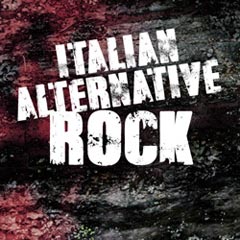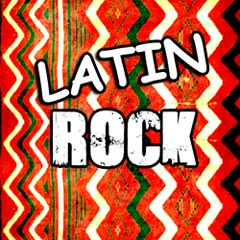Grunge
ON AIR - PROGRAMMING
Taking a Deep Dive into the Grunge Genre
If you're a fan of music that's raw, gritty, and full of emotion, then you've probably heard of grunge. This iconic genre emerged from Seattle in the '90s, blending heavy guitar riffs with haunting lyrics and pounding drum beats. While grunge may have fallen out of the mainstream spotlight years ago, it continues to captivate music lovers worldwide.
In this blog post, we'll take a deep dive into the grunge genre. From its origins to its influence on fashion and culture, we'll explore what makes this music so special. So grab your flannel shirt and your Doc Martens, and let's rock!
Grunge music is characterized by its unique sound, blending aspects of heavy metal, punk rock, and alternative rock into one captivating genre. The term grunge is thought to have originated from Mark Arm, from the band Mudhoney, who used it to describe the dirty, unkempt sound that characterized the Seattle scene at the time.
One of the defining features of grunge music is its production quality. Rather than striving for a polished, flawless sound, grunge bands often opted for lo-fi recordings that emphasized the raw energy of their music. This DIY approach extended to their fashion sense as well, with flannel shirts, ripped jeans, and Converse sneakers becoming a hallmark of the grunge look.
While grunge emerged in the Pacific Northwest, its influence quickly spread worldwide. Bands like Nirvana, Pearl Jam, and Soundgarden became household names, with millions of fans flocking to their shows and buying their albums. The grunge movement also inspired a new wave of alternative bands, paving the way for groups like Smashing Pumpkins and Weezer.
Despite its popularity, grunge music was never about flashy performances or pristine studio recordings. Instead, it was about capturing the raw emotion of the music, the pain and passion that came through in every note. This authenticity is what made grunge so special, and why it continues to inspire new generations of musicians today.
In conclusion, grunge may have faded from the mainstream spotlight, but its impact on music and culture lives on. Whether you're a die-hard fan or a newcomer to the genre, there's something uniquely captivating about the deep, emotional sound of grunge music. So the next time you're in the mood for something raw and powerful, consider giving a grunge album a listen. Who knows - you might just discover your next favorite band.
In conclusion, grunge may have faded from the mainstream spotlight, but its impact on music and culture lives on. Whether you're a die-hard fan or a newcomer to the genre, there's something uniquely captivating about the deep, emotional sound of grunge music. So the next time you're in the mood for something raw and powerful, consider giving a grunge album a listen. Who knows - you might just discover your next favorite band.
Grunge features and brief history
Grunge is a subgenre of alternative rock, born in the mid-1980s in Seattle. The origin of the term grunge is attributed to Green River’s singer Mark Arm, who first used the word grunge to describe this kind of music, his music, in a letter he addressed to the magazine Desperate Times in 1981. Aside from the allegedly original use, the term grunge was already circulating in Australia to define bands like King Snake Roost, The Scientists, Salamander Jim, and Beast of Burbon, whose records were already being aired in Seattle by the city’s college radios. Grunge music has peculiar features, inherited by hardcore punk and heavy metal: from the former the distorted fuzzy guitar sound, the feedbacks and the angst-filled lyrics about social alienation, apathy, exclusion and desire for freedom, the expression of a cultural rebellion against a depressed future. From the latter, the heavy metal, it took an improved melodic and harmonic refinement, its dissonant and slow-tempo attitude, and, sometimes, a more complex instrumentation.
The energy of grunge is best expressed on stage, with simple and direct settings; grunge musicians avoided the theatrical grandeur, the apparel and attitude of other genres and artists, whom they used to make fun of in their powerful lyrics and their mood. The motto was authenticity, being oneself day after day, year after year, being pure, not being a poseur, as Cobain said.
The geographical origin of grunge is the city of Seattle, WA. The discographic isolation of the city led to the fermentation and eventual maturation of a genre that simply wanted to define itself as rock, being born from the head of Seattle punk bands like The Fartz, The U-Men, 10 Minute Warning, The Accüsed, the Fastbacks, and of course the Melvins. Add to those some non-native bands such as Sonic Youth, Dinosaur Jr. and Pixes, to whom the same Kurt Cobain and Dave Grohl would pay tribute in two interviews respectively to Rolling Stone and Guitar World.
Black Sabbath and Led Zeppelin also moulded the dry and aggressive sound of grunge music, and The U-Man in 1981 and Black Flag’s 1984 album My War are the pioneers of heavy metal and punk blending. Butthole Surfers’ noise also contributed to the genesis of the genre with its mix of heavy metal, punk and, of course, noise rock.
The 1986 compilation Deep Six can be considered as the manifesto of grunge poetry; the compilation is the handbook of all grunge musicians, including a song each by Green River, Soundgarden, Melvins, Malfunkshun, Skin Yardand The U-Man. The baton was then passed on to the independent label Sub Pop, owned by one of the members of Melvins. The label started working to a project called Seattle Sound in order to make sure that the new sound emerged from the waters of a new controversial and audience-neglected music scene. An article of the British magazine Melody Maker gave the final push to the genre, opening the floodgates of an international audience that didn’t know anything about grunge up to that moment. At the end of 1980s, this new sound was interpreted as a new traditional genre that was revealing the American generational angst to the world music scene. Many bands started to copy the basic features of grunge, thus creating a group of copycats that clogged underground stages and highlighting the role of the original bands. In order to distinguish themselves, some bands like Nirvana and Tad started to write songs that were more melodic.
In 1989, Soundgarden, Alice in Chains, Nirvana and Screaming Trees signed their first major contracts, and after two years Nirvana published the immortal album Nevermind, followed by Soundgarden’s Badmotorfinger, Pearl Jam’s Ten, and Alice in Chain’s Dirt. This records hurled grunge out of its commercial niche, climbing charts and surpassing glam metal bands. The media and the mainstream market started an impressive marketing campaign to spread grunge iconography to an extent that it sometimes became grotesque and fake. The main grunge bands hadn’t started to play to become famous, and so they weren’t accustomed to being that famous and targeted by copycats. They responded with a sound that was even more aggressive than their debut albums, like Nirvana’s 1993 In Utero. The decline of grunge became unavoidable, as new post-grunge bands appeared on the scene, fusing commercial, radio-ready sounds, the utter lack of the original grunge background with an oversimplification of that rebel introspective taste of the beginnings.
Meanwhile, with its “youthful exuberance”, Britpop was rapidly barging through as the British response to grunge. Oasis and Blur were born exactly as a reaction to Seattle’s feelings and themes, as both bands’ leaders declared in some occasions. The deathblow to a genre whose main representatives were already disbanding was certainly Kurt Cobain’s apparent suicide on April 8, 1994, followed by Alice in Chains Layne Staley who died from an overdose in 1996 and by Pearl Jam’s boycott against Ticketmaster that prevented the band from playing major concerts for three years. In this period, Soundgarden and Screaming Trees too published their last studio albums, respectively Down on the Upside and Dust.
In the new millennium, the quality of original grunge musicians can still be appreciated in bands such as Pearl Jam, Alice in Chains (in their new line-up) Queens of the Stone Age, the heavily reshaped tradition of Foo Fighters and many other bands that have drawn inspiration from the sparkling light of this music genre.
What are you thinking about?







